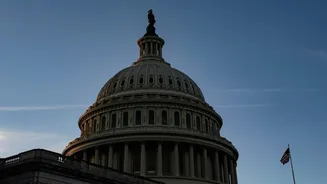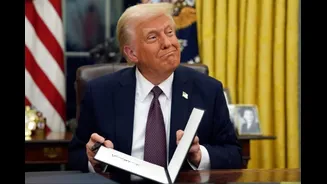The Court's Decision
The US judge's decision to halt the Trump administration's suspension of food aid benefits represents a crucial legal intervention. This directive effectively
reversed the administration's plan, which aimed to restrict access to crucial food assistance programs. The judge's ruling underscores the importance of safeguarding these benefits for those in need. It served as a critical check on the administration’s actions, highlighting the legal system's role in protecting vulnerable populations. Furthermore, the decision brought attention to the complex intersection of law, policy, and social welfare, demonstrating the lasting effects of legal proceedings on everyday life and the distribution of essential resources.
Impact on Beneficiaries
The immediate impact of the court's action was to secure the continued availability of food aid for countless individuals and families. By maintaining these benefits, the judge ensured that essential resources like groceries remained accessible to those who depend on them. These programs, which are vital for meeting basic needs, also prevent economic hardship and promote overall well-being. Keeping them operational helped to reduce food insecurity across the country. The court's ruling became a significant victory for those who rely on these forms of assistance, reinforcing the idea of providing a safety net for vulnerable members of society. The decision was not just a legal formality; it was a reassurance that basic needs would continue to be met.
Legal Challenges Addressed
The legal challenge surrounding the suspension of food aid brought to the forefront several critical questions related to administrative power and due process. Central to the case were concerns over whether the administration's decision followed appropriate legal procedures. The court's intervention strongly indicated that the initial plans had raised significant legal doubts. This ruling provided legal clarity, ensuring governmental actions in the area of public assistance were subject to rigorous legal scrutiny. It further clarified the required framework for decision-making processes. Through the court's stance, a message was sent that all government efforts, particularly those impacting the needy, must abide by all legal standards. This case served to emphasize the rule of law and the necessity of adherence to regulatory protocols.
Political Landscape Analysis
The court's decision also reverberated across the political landscape, sparking reactions from various parties. Supporters of the judge's ruling praised it as a win for the most vulnerable citizens. Those who advocated for maintaining these benefits saw the decision as vindication, affirming that support must be available. Critics of the ruling questioned the court’s intervention, often reflecting differing views on the role of government in providing assistance. The decision emphasized how the legal system and the administration would interact. The ruling also underscored the critical nature of these programs. Furthermore, the case highlighted the ongoing political debates surrounding food security, influencing both policy changes and the priorities of social programs.
Future Implications Unveiled
Looking forward, the court's decision will likely shape how food aid programs are regulated and carried out in the coming years. This ruling emphasizes the need for transparency, accountability, and legal compliance. The judicial decision is likely to influence policy debates and administrative procedures related to social welfare programs. It will also serve as a reminder of the need for legal safeguards and the role of the judiciary in overseeing actions taken by governmental bodies. Overall, the long-term impact of this case reaches beyond immediate consequences, which ensures the stability and longevity of food aid initiatives for years to come. The long-term effects of this decision will remain a crucial matter.


















